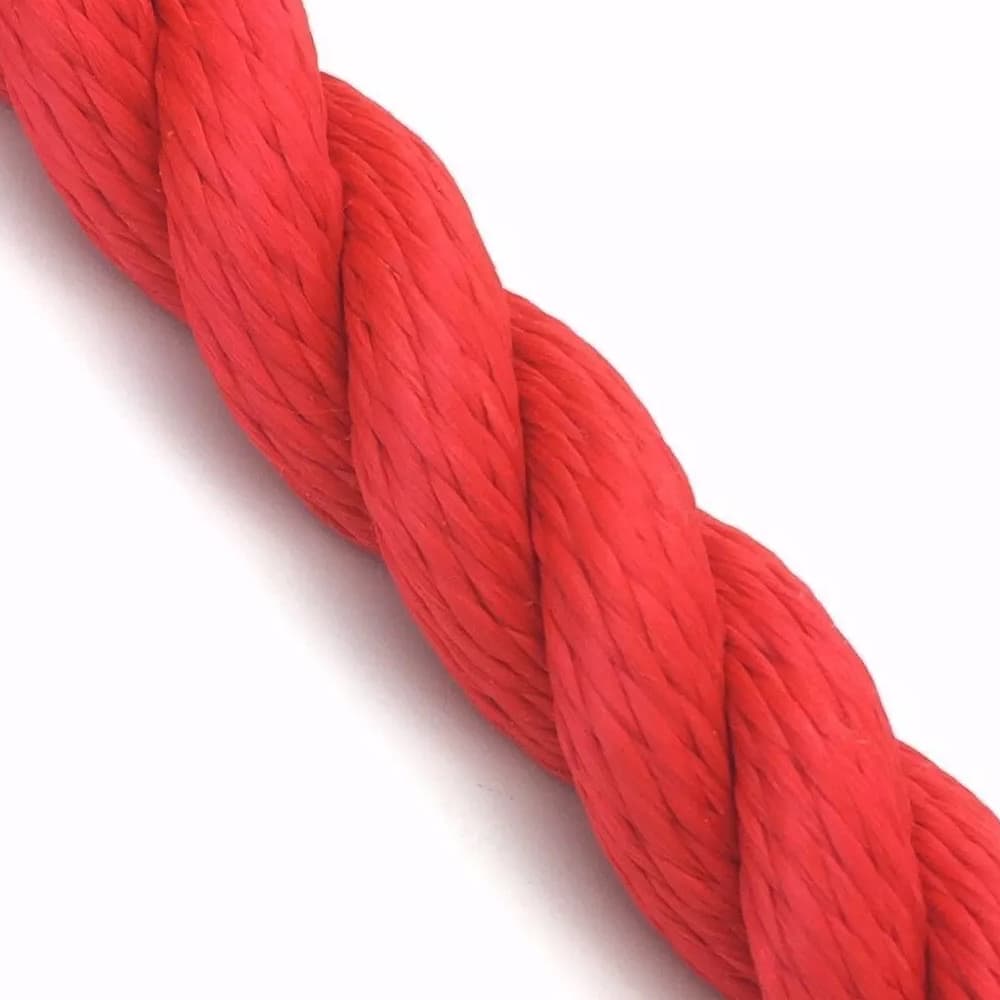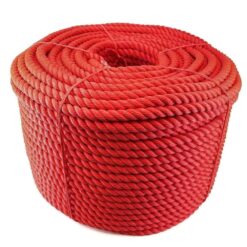28mm Synthetic Red Decking Rope x 100 Metres
When purchasing 28mm rope you will need 28mm rope fittings. Click HereWhat Size Rope Fittings Will I Need?
£750.00 Original price was: £750.00.£675.00Current price is: £675.00.
28mm Synthetic Red Decking Rope x 100 Metres
Synthetic Red Decking Rope
Upgrade your outdoor projects with our 28mm red synthetic decking rope. This high-quality rope combines strength, durability, and a striking appearance, making it perfect for various applications.
Key Features:
Lightweight and Durable: Easy to handle without compromising on strength.
Weather Resistant: Does not shrink or rot when wet, ensuring long-lasting performance.
Soft to Handle: Comfortable to use, reducing hand fatigue during extended use.
Excellent Knot Holding: Reliable knot retention for secure and safe applications.
High Break Load: Approximate break load of 10,500 kg’s, suitable for demanding tasks, if required.
Ideal Applications:
UV Resistant: Maintains integrity and colour even under prolonged sun exposure.
Shock Absorption: The high stretch characteristic of softline rope makes it excellent at absorbing shock loads.
Versatile Use: Perfect for mooring lines, fender ropes, anchor warps, and more.
Marine Applications: Suitable for all boats, yachts, and canal narrowboats, providing reliability in various marine environments.
Why Choose Our Synthetic Decking Rope?
Our 28mm red synthetic decking rope is an excellent choice for anyone needing a durable, high-performance rope that is also soft to handle. Its lightweight design makes it easy to manage, while its resistance to shrinking, rotting, and UV damage ensures it can withstand harsh outdoor conditions. Whether you’re using it for marine applications or general outdoor use, this rope delivers exceptional performance and reliability.
Order Now:
Invest in a rope that offers both style and substance. Order your 28mm red synthetic decking rope today and experience the difference in quality and performance.
Synthetic Rope and Its Properties
Synthetic rope is made from man-made fibers such as nylon, polyester, polypropylene, and polyethylene. These ropes are known for their high strength, durability, and resistance to various environmental factors. Unlike natural ropes, synthetic ropes do not absorb water, making them ideal for use in wet and outdoor environments. However, synthetic ropes have their own set of characteristics and considerations that you should be aware of.
Behavior in Wet Conditions
One of the key advantages of synthetic ropes over natural ones is their minimal water absorption. Synthetic ropes generally do not shrink or expand when exposed to moisture, making them highly reliable in marine, industrial, and outdoor applications. However, while they do not absorb water, some synthetic ropes may become slippery when wet, which can affect handling and knot-holding capabilities.
Effects of UV Exposure
Unlike natural ropes, synthetic ropes are resistant to rot and mildew, but they can be affected by prolonged exposure to UV rays. Over time, UV exposure can weaken the fibers, causing the rope to degrade and lose strength. To mitigate this, synthetic ropes can be treated with UV inhibitors or stored out of direct sunlight when not in use.
Resistance to Chemicals and Abrasion
Synthetic ropes are generally more resistant to chemicals and abrasion compared to natural ropes. For instance, nylon and polyester ropes are highly resistant to various oils, acids, and alkalis, making them suitable for harsh industrial environments. Additionally, these ropes have excellent abrasion resistance, which means they can withstand rough surfaces without significant wear.
Elongation and Stretch
Different types of synthetic ropes have varying degrees of elongation. For example, nylon rope is known for its elasticity, which allows it to absorb shock loads without breaking. This makes nylon rope ideal for dynamic applications such as climbing, towing, and mooring. On the other hand, polyester rope has low stretch, making it suitable for applications where maintaining tension is critical.
Care and Maintenance
To extend the lifespan of synthetic ropes, it’s important to follow proper care and maintenance practices. Regularly inspect the rope for signs of wear, abrasion, or UV damage. If the rope shows significant signs of wear, such as fraying or thinning, it should be replaced to ensure safety and performance.
Storage Considerations
When storing synthetic ropes, keep them in a cool, dry place, away from direct sunlight and chemicals. Coiling the rope properly and avoiding tight bends can also help prevent kinks and maintain the rope’s integrity.
Summary
Synthetic ropes offer numerous advantages over natural ropes, including resistance to water, rot, and chemicals. They are durable and strong, making them suitable for a wide range of applications. However, it’s important to be aware of their susceptibility to UV damage and to take appropriate measures to protect the rope from prolonged exposure. By properly maintaining and storing synthetic ropes, you can ensure their longevity and reliable performance in various conditions.








